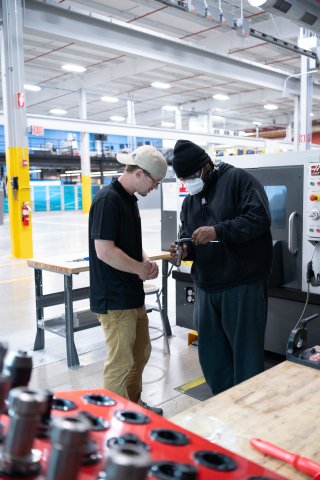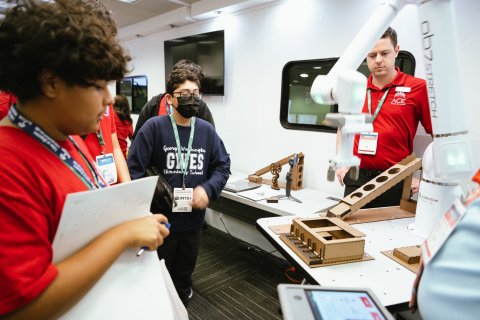Scaling manufacturing workforce programs to a national level has long been a challenge, but several Manufacturing USA institutes have successfully developed and implemented programs that are now being replicated across the country. These initiatives are building robust national platforms for workforce development, ensuring that workers everywhere are equipped with the skills needed to thrive in advanced manufacturing environments. By standardizing best practices and creating scalable models, these institutes are making a lasting impact on the nation's ability to meet future workforce demands.

Training Military Members for Manufacturing Jobs
LIFT’s Operation Next program has enrolled more than 1,000 people, mostly service members, to be trained in CNC machining, welding, industrial technology maintenance, and robotics. The free program is in four regions across the country. It was launched to provide training for active-duty personnel who are within six months of separation from service, and it has been expanded to include reservists, veterans, military spouses, dependents, and, in some cases, civilians. The curriculum includes a mix of self-paced learning, classes, and in-depth, in-person, guided instruction for one of four key job areas. Graduates devote about 400 hours to complete the program and receive a specialty certification that is recognized throughout the industry.
Learn more about LIFT
Broadening Access to Reinvented Machining Roles

IACMI, which focuses on advanced composite materials that are stronger and lighter than legacy materials, has now trained more than 10,000 people across 50 states in Computer Numerical Control (CNC) machining fundamentals for metals and composites through its America’s Cutting Edge (ACE) program, a national workforce initiative created by DoD to restore the prominence of the U.S. machine tools sector. The curriculum is geared toward anyone interested in manufacturing – from students searching for a career to machinists looking to expand their skills. ACE has taught at high schools, community colleges, trade schools, and even inside a mobile classroom.
Learn more about IACMI

